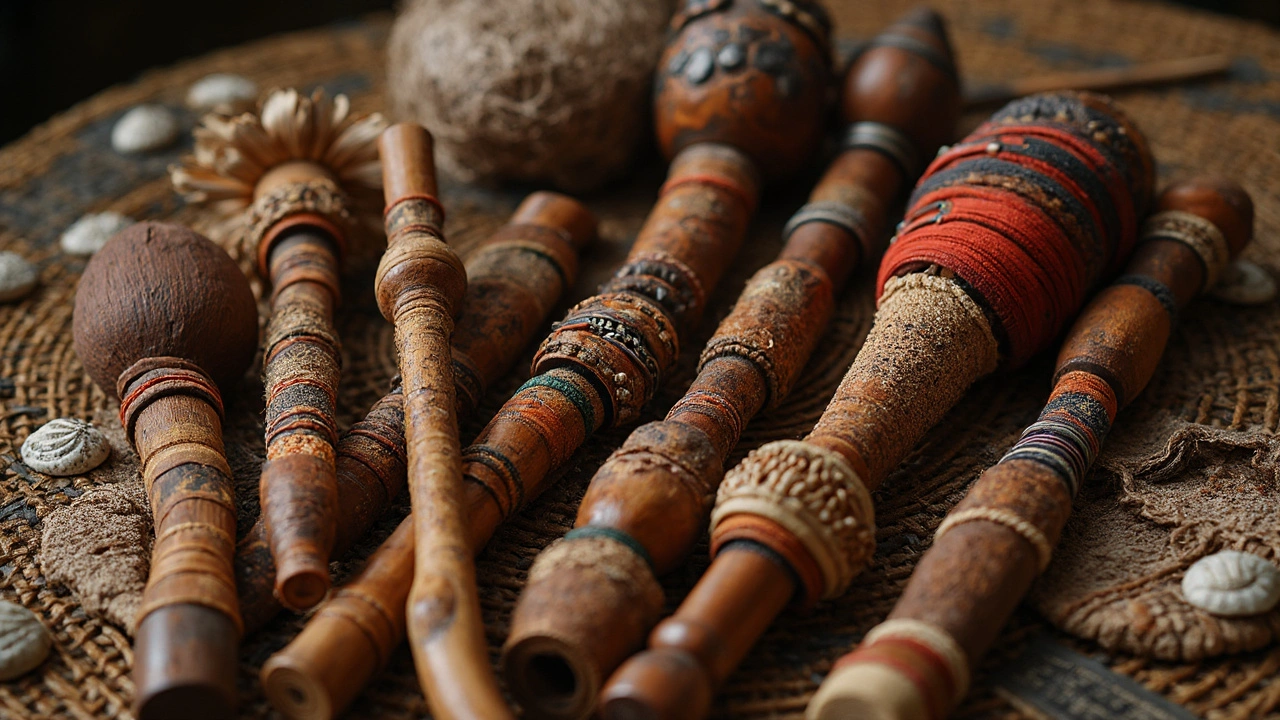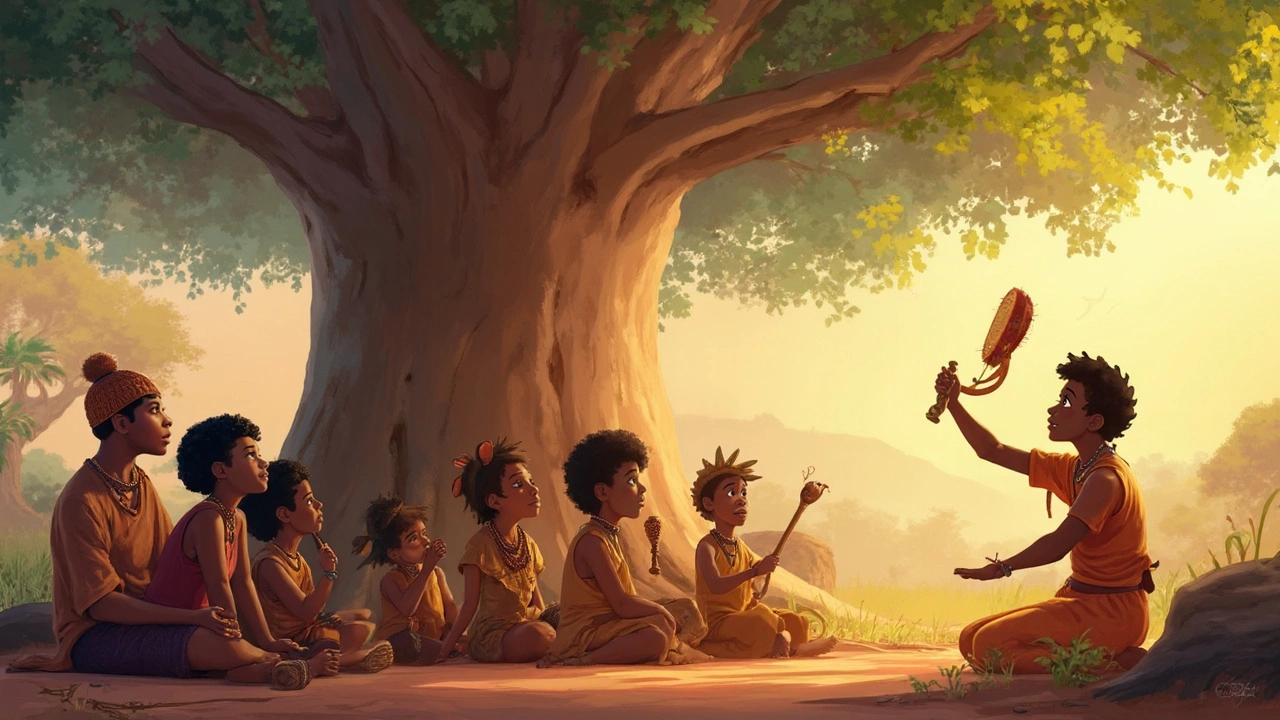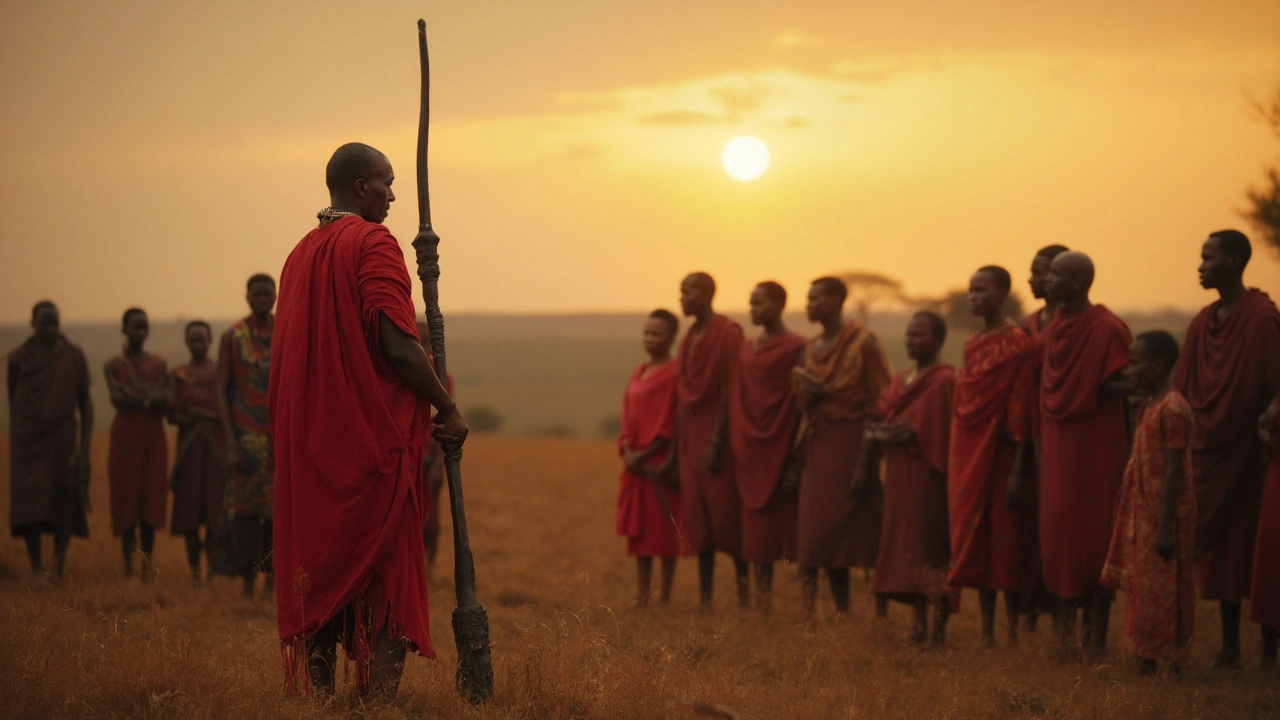Picture a ceremonial dance under the wide Kenyan sky. Dust swirls up as elders and warriors gather. Someone steps forward, holding a rungu—a short, heavy wooden club. It might look simple at first, but this carved object carries memories, beliefs, and power that go way beyond what you’d expect from a chunk of hardwood. The rungu isn’t just for show. For generations, it’s been front and center in African rituals—especially among the Maasai, Samburu, and several other East African groups. Stories swirl around it. Some say a rungu has the ability to settle arguments, bless a hunt, or even curse your enemy. Can a single club really shape so much? When you dig into how people use it, the layers run deep, blending tradition, politics, and family legacy.
The Rungu: More than a Weapon
The rungu can fit in your hand, but its meaning fills a room. At first glance, it’s just a club: about the length of a forearm, with a thick, rounded head carved from hardwood like acacia or ebony. It shows up most in East Africa, and especially in Maasai and Samburu communities. With the Maasai, it’s almost impossible to picture a warrior—an ol-murrani—without a rungu at his side. This isn’t about random tradition or fancy accessories.
So why does it matter? For starters, the rungu stands for authority. Elders pass it down during rites of passage, making it a kind of baton that signals your transition through life stages. In some ceremonies, it’s the rungu—not a spoken word—that settles disagreements. You lay it down between two arguing people. Whoever picks it up first has the right to speak, turning the wooden piece into a symbol of negotiated peace. Young men get their first rungu after proving themselves, usually through challenging expeditions. It’s as if the rungu is a diploma, a handshake, and a key all rolled into one.
But it’s also a weapon. Out in the bush, the rungu was a Maasai warrior’s tool—light enough to carry but strong enough to knock out threats, animal or human. It’s not all ancient history either. Recent photos from Kenyan political rallies show politicians holding a rungu aloft to project strength and a connection to the people. The symbolism doesn’t fade. If anything, it adapts.
And don’t forget the craftsmanship. Almost every rungu is hand-carved, often passed from parent to child. Bright paints, geometric patterns, or sometimes, iron studs tell a silent story about the owner’s family, achievements, or even defeats. A chipped head or a repaired crack might speak louder than words about a fight or a narrow escape.
Rungu in Maasai Rituals: Power and Belonging
If you want to get the real measure of a rungu, you have to step onto Maasai land. Birth, coming-of-age, marriage, and death—each milestone brings the rungu out of storage and into the center of the village. Let’s start with initiation rites. Boys become warriors in a fierce and carefully staged ritual known as "Emuratta"—the Maasai circumcision ceremony. Part drama, part test of bravery, the boy must not flinch. At the end, a senior warrior hands over a rungu, which seals the boy’s new identity. No rungu, no warrior status. Family feasts follow. Sometimes, old grandmothers offer a blessing by tapping the new rungu three times above the boy’s head while whispering their hopes for his courage and wisdom.
The power continues at community gatherings. During the "Enkipaata"—the pre-circumcision festival—elders walk through the circle, tapping the ground with their rungus to keep the crowd in line. They're not just policing; they’re anchoring the event to the ancestors. If tempers boil over at a feast, the rungu becomes a referee. Whoever owns it holds the right to talk; others stay silent until it’s handed away.
Then comes marriage. A groom sometimes carries a specially decorated rungu in the wedding procession. After vows, it’s stored at the family hearth, a visible reminder of both marital authority and the expectation to protect his home. Even the way the bride's family carves or decorates a rungu as a gift can send a quiet message: sometimes a blessing, sometimes a warning not to mistreat their daughter.
Death brings its own traditions. When a revered elder dies, their rungu isn’t buried but passed on. The surviving son or daughter uses it to lead processions for a week. In rare cases, families break the rungu and scatter the pieces to return the ancestor’s wisdom to the earth. You feel the gravity then—the sense that these are not just items but living memory keepers.

Symbolism: What Does the Rungu Really Mean?
Every symbol builds on stories, and with the rungu, those stories travel far. At first glance, people call it a weapon, but most rungus never hit a thing. The wood—the grain, color, and finish—can mark rank and origin. Ebony indicates higher status; plain wood is for youth or newcomers. Paint and beads add more layers. Red is for power. Blue invokes calm. White is purity. One Maasai elder once told a BBC reporter that his rungu had “watched” five generations marry, fight, and forgive each other.
The rungu turns up as a political tool too. Back in 1952, during the anti-colonial Mau Mau uprising, the rungu was seen at oath ceremonies. Those attending swore never to betray their companions, sometimes holding their rungus above flames as if to seal the promise.
In the home, parents might lay a rungu across a baby’s sleeping mat to “ward off night spirits.” During drought, a chief may raise his rungu during rain prayers. If it rains soon after, the community believes the rungu helped. Skeptical? Maybe. But the object keeps finding a role, often in moments when words don’t quite cut it. Even among city dwellers, a rungu hung on the wall can be a reminder of strength and heritage that’s impossible to buy off the shelf.
For tourists, rungus are sometimes just souvenirs—ornate and trimmed with beads for eye appeal. This isn’t the full story, though; mass-produced rungus lack the weight of family, history, and ritual. Genuine rungus come with stories attached: rivalries solved, friendships made, hunts survived, and feasts remembered. Documentary filmmakers occasionally record a rungu being laid on a table during peace talks. People fall silent, knowing something important is underway.
Crafting and Personalizing Rungus: Techniques and Traditions
No two rungus look identical if you’re in a traditional Maasai or Samburu village. Making a rungu starts in the woods, where someone selects a tree based on strength, straightness, and even local beliefs about the "spirit" in the tree. Elders sometimes claim that rungus carved from certain twisted branches are luckier or blessed. Once selected, the wood is shaped with a sharp knife—often using techniques passed down for generations. Hardwoods like acacia get carved slowly and cured in the sun for weeks. This isn't just about durability; it makes the club crack-resistant for years.
After shaping, decorations start. Carvers dig geometric grooves, sometimes inlaid with beads or colored wire. Special orders for weddings or chieftaincy ceremonies may include brass bands, cowrie shells, or even silver thread. One expert carver in Narok, Kenya, told National Geographic he needs four days to finish a high-status rungu, and each design tells who the owner is and where they're from.
Personalizing goes beyond looks: people sometimes add burns or nick out parts after surviving an ordeal. Warriors add a notch for every battle or big event, much like tallies on old baseball bats. Chiefs and elders sometimes engrave animal symbols—lions for courage, elephants for wisdom. Beyond aesthetics, each change shifts the rungu from a simple tool to a living archive. If a rungu breaks, it isn’t always discarded. Older men repair it with iron rings or leather binding, arguing it’s now twice as lucky.
Women have their own rungus—generally smaller and with more decorations, sometimes used in dances or as gifts during ceremonies. A girl receiving her first rungu marks it as a sign she’s ready for marriage or motherhood. For non-Maasai or Westerners fascinated by these traditions, buying a rungu in a craft market is easy—but the story and meaning only run deep if you understand the journey from tree to hand.

Modern Life and the Rungu: Adaptations and Surprising Roles
Don’t think for a second the rungu is stuck in the past. Modern Maasai and Samburu leaders still carry one at public events. During Kenyan elections, politicians wield a rungu while addressing crowds—signaling their connection to tradition and their promise to protect local interests. Sometimes, it’s just a photo op; other times, it’s a real sign that old traditions are still alive, blending rural roots with big-city politics.
In tourist hotspots, rungus pop up as decorative pieces—lining shelves in Nairobi shops or hanging in hotels. Local artisans shape them for modern buyers, adding stories or carving English names into the handle. Some rural police officers keep a rungu on hand as a symbol of community authority, not unlike a ceremonial staff in Western parliaments. You’ll find the object in photos, logos, and even company branding, attached to anything that wants to feel “authentically African.”
Athletes use the rungu in opening ceremonies for marathons and long-distance races—from Lewa down to Arusha. The starter holds a rungu overhead before shouting “Go!” It marks the beginning, rooting the modern event in deep tradition. Teachers tell kids about rungus in cultural classes, reminding them that even objects have stories, pride, and purpose.
| Traditional Use | Modern Use |
|---|---|
| Rites of passage for boys/warriors | Decorative symbol in offices and homes |
| Peace-making at community gatherings | Used in opening ceremonies and parades |
| Weapon for protection during herding | Political symbolism in rallies |
| Marriage rituals and blessings | Criminal investigations in special cases (as evidence of status or role) |
| Symbol of chief or elder’s authority | Souvenirs for tourists |
If you want to see a rungu in action, find a Maasai celebration—weddings, coming-of-age feasts, or harvest festivals. Watch how elders use it to command respect without raising their voices. Count the number of times it changes hands, and listen for the hush when it’s laid down to settle a dispute. The secret sauce isn’t just in tradition, but in how alive and flexible the custom stays—shaping itself to fit new needs without losing the old power. Next time you see a rungu carving in a market or museum, remember: it’s not just wood, but a silent player in stories of courage, conflict, and connection that are still being written.

